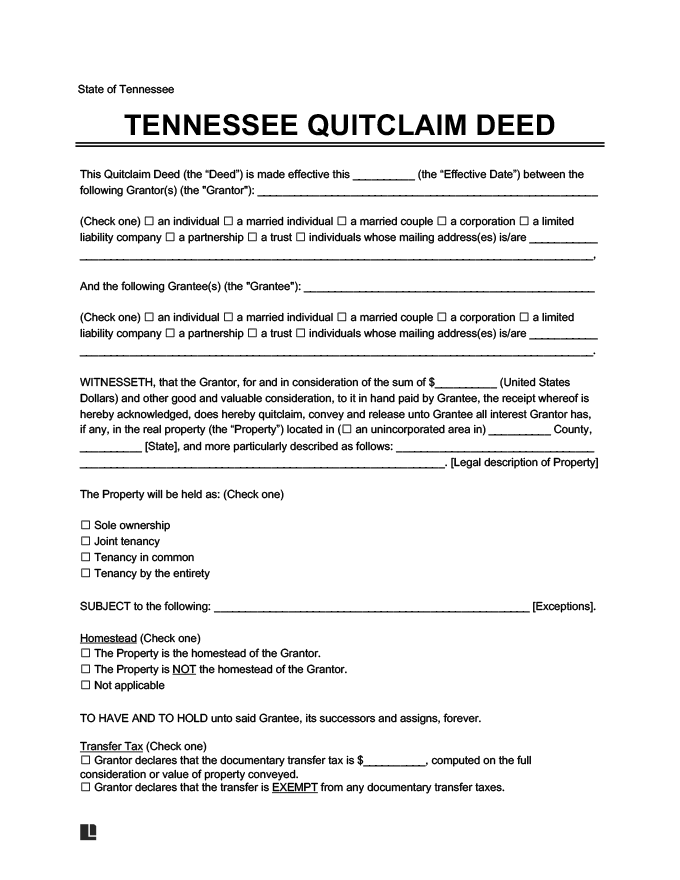When filing a quitclaim deed in Tennessee, whether for a real estate transfer or deed modification, follow these steps to ensure you complete the process correctly.
Step 1: Get a Copy of the Property Deed
The original deed contains critical details you need to create your quitclaim deed. The owner may have a copy of the document in their possession. If not, you can also request a copy from the Register of Deeds in the property’s county.
Step 2: Note the Property’s Legal Description
Tenn. Code § 66-5-103 requires quitclaim deeds to include a legal description of the property. You can find the legal description on the existing deed. In general, it should include any of the following:
- Subdivision and lot
- Metes and bounds
- Section, township, and range
- Property street address
Step 3: Draft the Quitclaim Deed
Create a quitclaim deed using the language provided under Tenn. Code § 66-5-103 or similar terminology. Your completed Tennessee quitclaim deed should include the following details:
- The grantor’s and grantee’s names and addresses.
- A legal description of the property.
- The preparer’s name and address.
- The amount of consideration exchanged.
- The grantor’s signature.
- The grantor’s spouse’s signature if the grantor is married and the property is a homestead.
Step 4: Sign and Notarize
Per Tenn. Code § 66-22-101, the grantor must sign a quitclaim deed before a notary public or two subscribing witnesses. Any quitclaim deed a grantor submits electronically must also be notarized.
Step 5: Complete the Verification of Consideration
If the deed is subject to recordation tax, the grantee must acknowledge the consideration amount for the property transfer via verification of consideration (or an oath of value) under Tenn. Code § 67-4-409.
You can add this as a section in the deed or submit it as an attached affidavit. Deeds exempt from recordation tax need not include an oath of value. Instead, the deed should note the specific statutory exemption.
Step 6: Register the Deed
In accordance with Tenn. Code § 66-5-106, you must register the quitclaim deed and pay the appropriate taxes and fees to the county register where the property rests.
